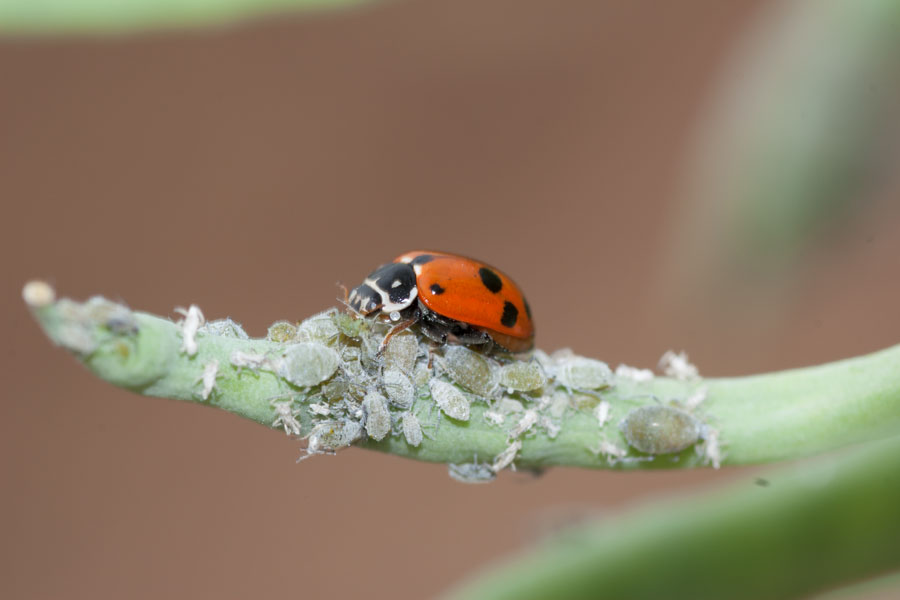Key points
- Invertebrate pest management in grains is complex and adoption of integrated pest management approaches is slow, so innovative new approaches are being examined
- Selection pressure is a main driver of resistance evolution. Work is underway to better estimate such pressures for grains pests
- The potential for manipulating endosymbionts (bacteria that live in insects) is being explored to see if they can be used to disrupt insect pest survival
- Emerging issues such as insecticide resistance in key pests, possible regulatory withdrawal of important chemicals in the future and a growing recognition of the role that beneficial insect species can play are motivating growers and researchers to seek novel solutions to the challenge of insect pest control.
The Australian Grains Pest Innovation Program (AGPIP) – a collaboration between the Pest & Environmental Adaptation Research Group at the University of Melbourne and cesar, with GRDC and University of Melbourne investment – is looking to apply out-of-the-box thinking to some of the grain industry’s most troublesome pest management challenges.
In Australian grains, insect pests are responsible for more than $350 million in yield loss or damaged product per year. Insect damage to crops can occur directly through feeding damage or indirectly through the transmission of viruses. The cost of controlling pests involves labour, product purchase and application, monitoring and testing costs, and professional advice. It can represent a significant expense in a farm’s yearly budget and issues such as insecticide resistance can further complicate pest management.
Led by Associate Professor Paul Umina and Professor Ary Hoffmann at the University of Melbourne, AGPIP is undertaking research and extension activities that support the transition to more sustainable and cost-effective pest management practices.
“We seek to shine a light on some of the remaining mysteries when it comes to control of insect pests,” says Associate Professor Umina.
“This will support better-informed decisions about control of certain key pests as well as potentially offering new options for pest management. Sometimes you need to think laterally to achieve a step change in how we approach these issues.”
The understanding of the importance of beneficial insects in integrated pest management needs to be bolstered. Ladybird beetles can play a significant role, here feeding on an aphid colony. Photo: Dr Andrew Weeks, cesar
Drivers of resistance
Insecticide resistance is a growing issue for the grains industry, with common pests such as the green peach aphid (Myzus persicae), redlegged earth mite (Halotydeus destructor), diamondback moth (Plutella xylostella) and cotton bollworm (Helicoverpa armigera) having already evolved resistance to registered insecticide options.
The evolution of resistance in pest populations reduces the options available for managing potential outbreaks and can increase selection pressures for remaining chemical actives.
While selection pressures (such as pesticide exposure) are a main driver of resistance evolution, the industry lacks reliable methods to estimate selection pressures for grains pests. Also, there is a variety of other factors that may accelerate or delay the evolution of resistance in an insect pest, including the local environment, species biology and ecology.
By improving estimates of selection pressures and increasing the understanding of other factors driving resistance, AGPIP research will support identification of resistance risks before the resistance evolves or becomes widespread. This research will help the industry to predict when, where and how resistance might occur, and help direct the development of resistance management strategies.
Enlisting beneficials
The capacity for natural enemy species to contribute to pest management systems through their parasitism and predation is increasingly recognised. However, the incorporation of biological pest control practices into existing pest management strategies is constrained by knowledge gaps regarding the pest suppression capacity of natural enemy species in grain systems and the impact of pesticides on these species.
AGPIP is looking to fill these gaps and develop a guide for growers that details insecticide and miticide toxicity ratings for natural enemies of grain pests. This work will combine existing research, with additional laboratory testing to fill knowledge gaps of pesticide impacts on species. The research will seek to account for both the direct impacts (through mortality) and sublethal impacts (such as on reproductive capacities) of the pesticides tested. In the long-term, the research will help grain growers identify chemicals that are less disruptive to their natural enemy populations so as to better utilise this free biological service.

Associate Professor Paul Umina (right) answering questions with Greg Baker at GRDC Updates in South Australia. Photo: Rebecca Jennings
Endosymbiont research
The most blue-sky research being undertaken through AGPIP is examining options to manipulate tiny microorganisms living inside pest insects (called endosymbionts) to reduce the risk of crop damage and plant virus transmission.
Endosymbionts are bacteria that live in the cells of other organisms (such as insects) in a symbiotic relationship. Co-evolving over thousands or millions of years, endosymbionts can become crucial to certain survival processes in the insect host. These processes may include nutrition, reproduction and resistance to external pressures such as insecticides. They may also impact on the insect’s ability to transmit viruses and its susceptibility to predators.
By manipulating endosymbionts within the insect, it is possible to disrupt these processes and weaken pests. AGPIP researchers are looking to use this approach in pest aphids to reduce the impacts of direct feeding damage and aphid-to-plant virus transmission. This will be achieved through transfers of particular endosymbionts from one aphid species into another, as well as the suppression of endosymbionts in pest species through heat and chemical treatments.
Similar work is planned on endosymbionts in pest moth species and the beneficial species that attack the moths’ larvae. This research aims to increase rates of parasitism and predation of the pests. Both the resistance of beneficial organisms to pesticides and their reproductive rates could be increased through endosymbionts, enhancing their efficiency in controlling pests. Led by Professor Hoffmann, the research team at the University of Melbourne has previously been successful in manipulating endosymbionts in mosquitoes to reduce transmission of Dengue virus.
“Taking the lessons learned from our work with mosquitoes, we hope to be able to replicate these successes in key insect pests and reduce the risk of crop damage for growers,” Professor Hoffmann says.
The manipulation of endosymbionts offers a different and more sustainable option for managing agricultural insect pests in the future, in which the microorganisms in the pest become as much the target as the pest itself.
Watch the video AGPIP: Investigating novel technologies and management strategies to control insect pests
More information: Francesca Noakes, 03 9349 4723, fnoakes@cesaraustralia.com

























































